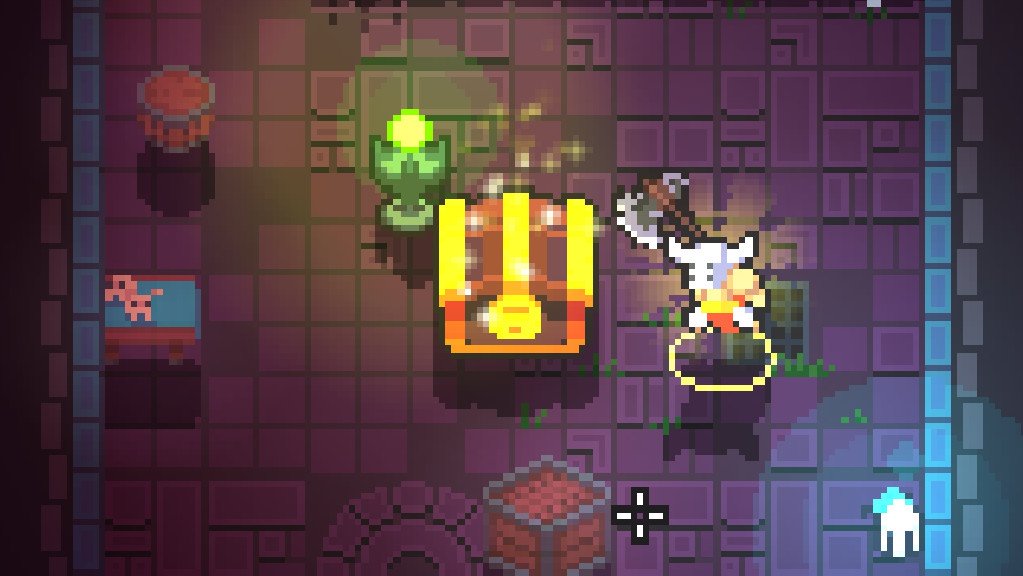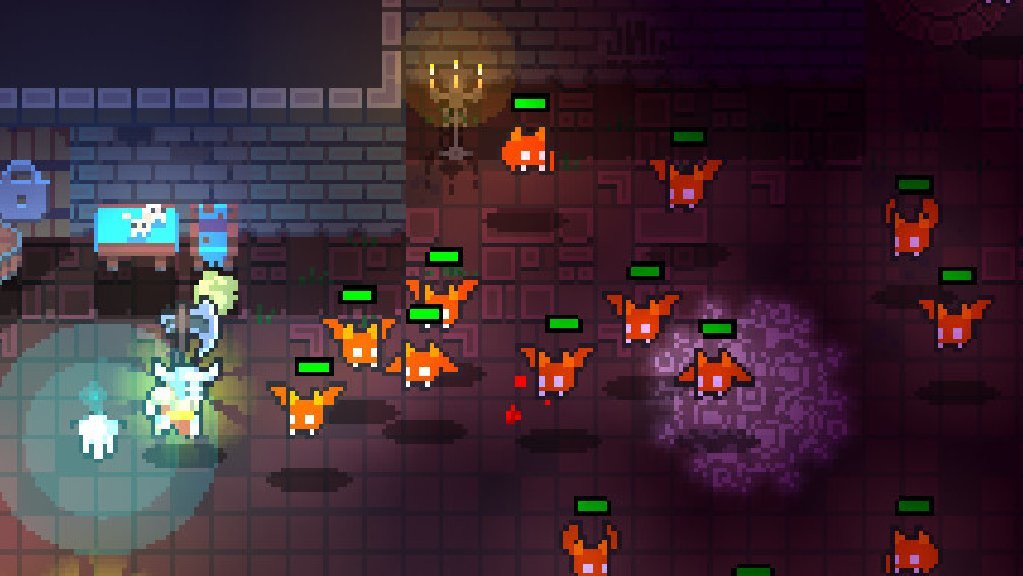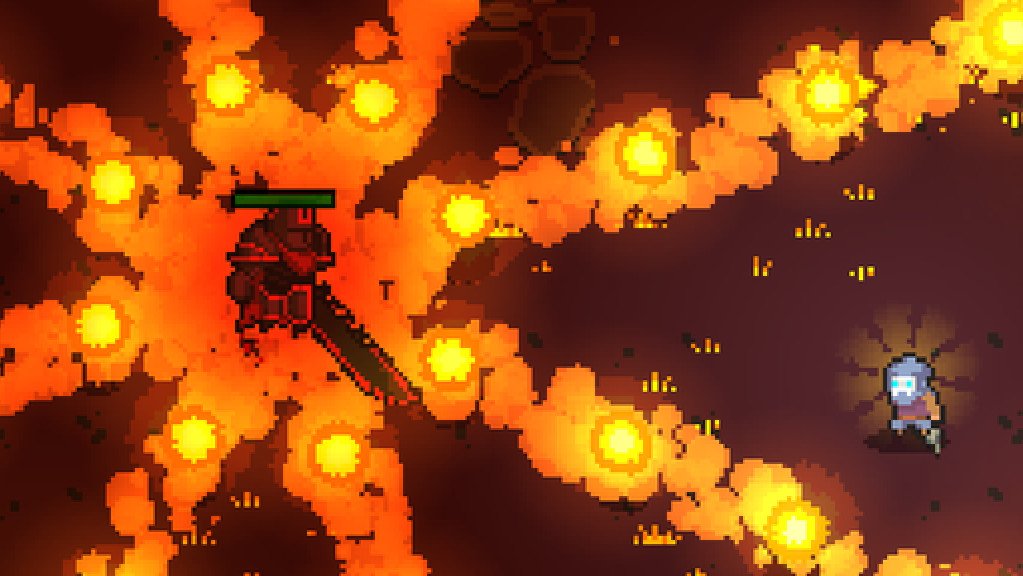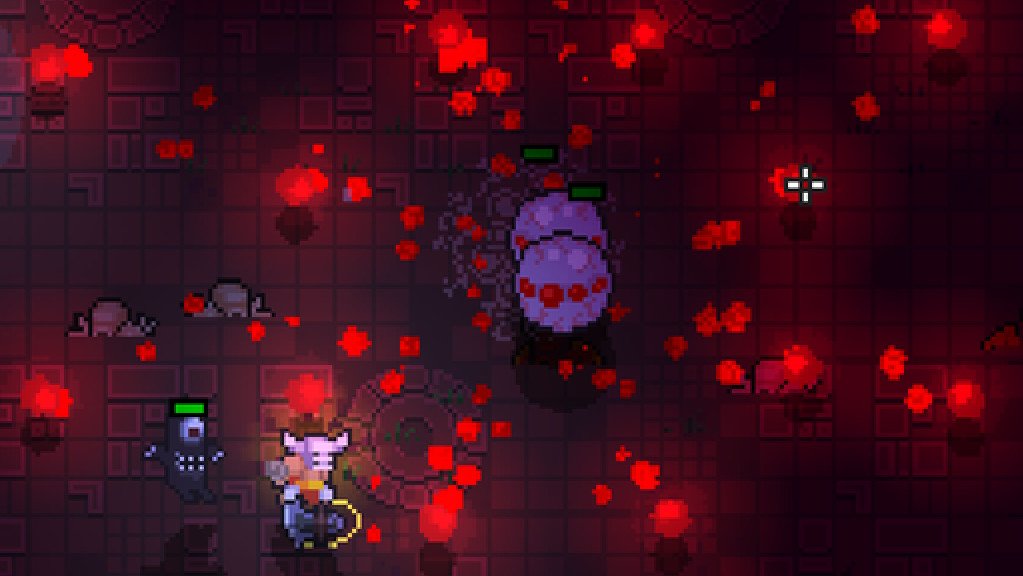Dungeon Souls Review
An enjoyably chaotic dungeon crawler
Growing up, one of my genres of choice was the hack and slash. Any game that threw you right into the heat of the action and got the adrenaline pumping, heaving massive hordes at baddies at you, and kept you fighting frantically for your life, I was in. The roguelike subgenre, on the other hand, was one that I largely missed the boat on until more recently. Yet games like Dungeon Souls have acted as a suitable gateway drug into the darker and more intimidating depths of this relentless niche style of gaming. From the intense difficulty, grinding, and sheer skill required to make a significant run, there is a certain feeling of reward that comes with the roguelike that I’ve grown to appreciate. And while this indie title doesn’t exactly break new ground in most respects, developer Lamina Studios have created an overall enjoyable and appealing retro gaming homage which treads the line nicely between these two old-school genres.

Make no mistake - Dungeon Souls is certainly a roguelike at its core. You’ve got the frequently occurring permadeath, which will no doubt have you cursing out the computer screen and slamming your keyboard; the randomly generated dungeon floors, and an assortment of randomly spawning enemies all trying to put a swift end to your journey. Then of course you’ve got one of the genre’s biggest defining features, which will have most younger gamers running for the hills - the lack of any sort of save feature whatsoever; even a temporary one. Despite these more hardcore gaming characteristics which harken back to a bygone PC gaming era, Dungeon Souls in many ways resembles a more casual-friendly SNES/Genesis experience with an emphasis on simple short-burst gameplay and charming pixelated graphics. Like many of the early console and arcade titles, this game is pure action-based insanity - almost to a fault. Yet, beyond the chaos lies an overall fun and enduring trip that - while perhaps could benefit from some more depth and fine tuning - will likely have you crawling back for more abuse.
Upon diving into the game, you’ll find that there doesn’t seem to be much substance beneath the pixelated surface - and this is a fair assessment, at least in the early goings. You’ll only be given the choice of three character classes - the barbarian, the archer, and the thief. Each class comes with their own strengths and weakness, though the weaknesses are certainly more apparent. The barbarian, while emphasizing strength, doesn’t seem to do as much damage as he probably should, and his axe only covers a short distance for an offensive character. The archer and thief, while speedier, are both extremely vulnerable, and can be quickly annihilated upon being surrounded by a barrage of enemies. The latter’s default attack is also very erratic and fires in a manner that makes Rambo look accurate. Because of these glaring weaknesses, it will behoove you to unlock some of the superior classes like the warrior and the necromancer. This is when things tend to get more interesting, not to mention a bit more fair for the player. No matter which class you chose though, one thing is certain - you will die, and you die a lot. And on top of this, you’re only given one measly life to work with. The frequency starting over from scratch with an entirely new character can not only be discouraging, but can also make the pacing of the game feel a bit slow and repetitive.
But, such is the nature of the roguelike. Thankfully, like most of its ilk, this sort of game also rewards persistence, and gets more interesting once you’ve taken your lumps. You can eventually grind your way to landing a myriad of upgrades - both temporary and permanent. These will slowly but surely beef up your character and give them more of a fighting chance to make a significantly deeper run. Upgrades come in a variety of forms; among the most significant of which are known as “passives.” With the gold you’ve managed to accumulate, you can boost a variety of statistics, from increased attack, to stamina, to the ability to snag more loot. These are vital, as they are not only one of the few milestones of progress that carry over after dying, but they apply to any class you chose in a future run. During the game, your character will also earn points after leveling up, which are applied to stat points, giving the game some subtle RPG elements. You can also permanently “rank” up your character after playing frequently with a specific class and earning a specified sum of coins, though this feature is for the truly dedicated, as the amount of coins required to bump up your rank is rather immense.

In addition, there are a plethora of items to collect from enemies and chests. These act essentially as player buffs, and upon dying, will all be wiped clean just as quickly as you’ve earned them. These items can be anything from strength-boosters, to spell cooldown reduction, to rotating spike balls that damage enemies in their orbit. Though many of these only provide subtle enhancements, they can sometimes mean the difference between life and death. Further, you can collect health-restoring potions, or even gather certain items and recipes that can be used to craft more powerful weapons, though it will take a while to be able to craft anything of note. Potions as well as some other items can be purchased at randomly located stores throughout each dungeon level - that is, once you’ve cleared out the annoying rabble of enemies that like to hang out there.
While each individual dungeon floor is randomly generated - ensuring at least a relatively new experience during each grind session - there is a set progression of environments, each with their own character and their own types of enemies. Among them are - a prototypical underground dungeon, a slimy, poison infested sewer, an ice-laden “Frost Cavern,” an ominous cathedral, and the majestic “Fae Gardens.” There is also a secret set of dungeons triggered by opening up certain chests/items, complete with greater loot, but even more difficult enemies to fight your way through. As an interesting side note - the secret stages also provide rare glimpses of the otherwise unmentioned narrative upon their completion via journal entries. The story is on the ambiguous and generic side, but it does succeed in providing a little more flavor and insight into the background of this strange, unknown dungeon you are thrown into.
The gameplay mechanics feel crisp and responsive for the most part, which is beneficial to a title that emphasizes such a fast-paced style. The controls, particularly when using the keyboard-mouse combo, can verge on feeling spastic and herky-jerky, but are nonetheless responsive. It does become a bit difficult wrestling with the less-than-intuitive keyboard and mouse setup when the action picks up. You’ll often find yourself fumbling around for the “1” key in a desperate attempt to use your potion as you watch your health bar quickly dwindle. Luckily you can hook up a game controller, which feels more natural and tightens things up. Using the joystick to move around your cursor for aiming can feel a little awkward at first as opposed to simply dragging a mouse, and you may have to map the buttons to your liking in order to get the right feel, yet the overall functionality of using a controller makes for a noticeable improvement in the feel of the mechanics.

Dungeon Souls does border on being too frantic at times, particularly on the harder difficulties and later stages, when there can be so much going on that it is difficult to absorb, let alone survive. You’ll frequently find yourself engulfed by a pixelated mishmash of spells and projectiles flying around, enemies popping up and scurrying after you at a rapid rate, and piles of coins and loot scattered about - often while being confined to small rooms, sure to bring out your inner claustrophobia. Couple this with the game’s sporadic camera rumbling that triggers when certain hits are landed and the experience can be downright disorienting. And just to add insult to injury, there is a liberal dosage of traps placed about, which always seem to rear their ugly head when you’re in the heat of the action and either haven’t noticed them, or were too preoccupied to evade them. These traps provide what I feel to be among the game’s greatest detriments. They just felt overused and overpowered. I could think of countless instances in which I was able to muscle my way through waves of enemies, only to be swiftly crushed to death by a boulder, or skewed by floor spikes. I probably perished roughly 8 out of 10 times by way of one of these traps, rather than an enemy.
The game revolves around traps in more ways than one. You won’t just be scrambling to avoid traps, but there are also traps that you will actually need to seek out in order to progress. In fact, the very name of the game isn’t merely to take out hordes of enemies, but to activate a designated set of floor markings while doing so, which will in turn trigger more enemies to spawn. Once you’ve activated each of these traps, a portal near the center of the room will appear, and you’ll need to make a mad dash towards this exit. If you dilly-dally, an ominous demon called “The Redeemer” will emerge and chase you down until you’ve scrambled to the portal and repeat the process again on the next dungeon floor. It’s nothing particularly groundbreaking, and the process can grow a bit repetitive at times. Yet it works well enough for short gaming sessions, and is more-or-less what you’d expect for a retro themed dungeon crawler anyway. Even with the repetition, and the sometimes stagnant progression, the frantic pacing of the gameplay usually keeps things exciting, and coupled with the promise of rewards after prolonged playthroughs, usually does a nice enough job of balancing out the tedium.
One missing feature is online play, which is a bit of a shame, as providing an easy method for recruiting a partner to fight alongside you would have undoubtedly made things more interesting and fairer. The game does allow for split screen multiplayer, forcing one player on the keyboard-mouse while another uses a controller. This feature is a welcome addition and amps up both the fun and intensity, though it often becomes even more difficult to process everything going on with a relatively small monitor being split down the middle and shared among two players. Even the game itself has a difficult time with its own action, as I’ve noticed increase slowdowns, and an occasional crash, during these multiplayer runs - and my PC isn’t exactly ancient. While it’s the absolute minimum we could hope to get on the multiplayer front, it’s still better than nothing.

Much like the gameplay itself, the aesthetics and sound design take a pretty minimalistic approach. The pixelated graphics, as well as the crude sound design and music, are both a bit on the basic side. The old-school aesthetics make it feel as though you transported back in time and are playing through a dungeon crawler from the late 80’s - early 90’s, and mesh nicely with the action-oriented gameplay and stiff NES-like controls.
This isn’t to say that Dungeon Souls surpasses or even matches many of the hack n’ slash or roguelike gems of that golden era of gaming, but it does prove a nice homage and a fun little diversion. It rewards dedication in order to get the most out of the experience, though it never requires it in order to enjoy the game. It skips over the fluff like overdrawn narratives, tutorials, and dialogue, and tosses you right into the insane action, which is a near constant barrage. Some more innovations may have benefited it, and even the gameplay that is there could use some refinements and fleshing out - but for a budget price of under $15, it proves to be a solid indie title that will provide plenty of thrills.
 Comments
Comments












